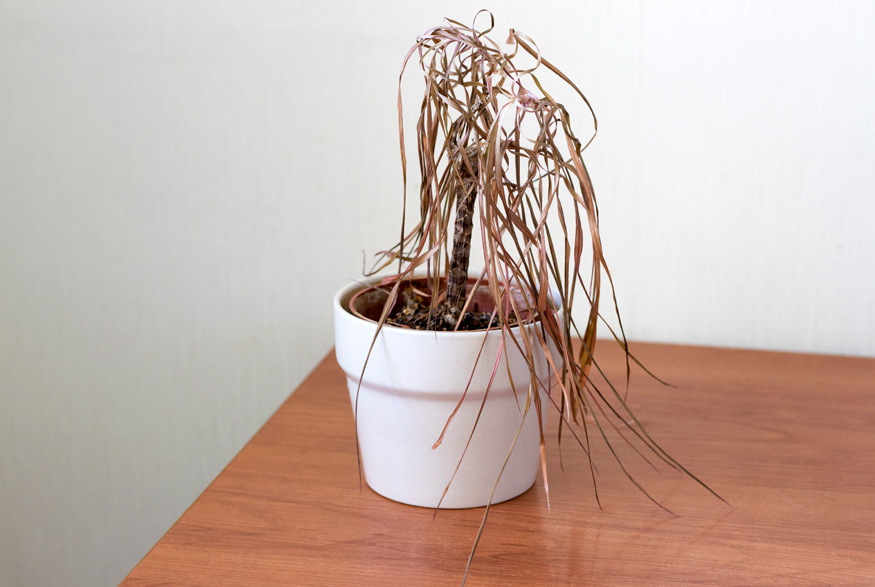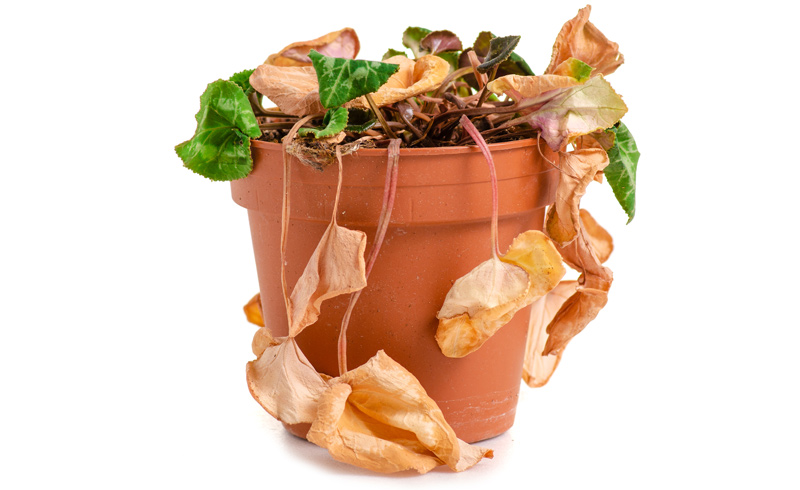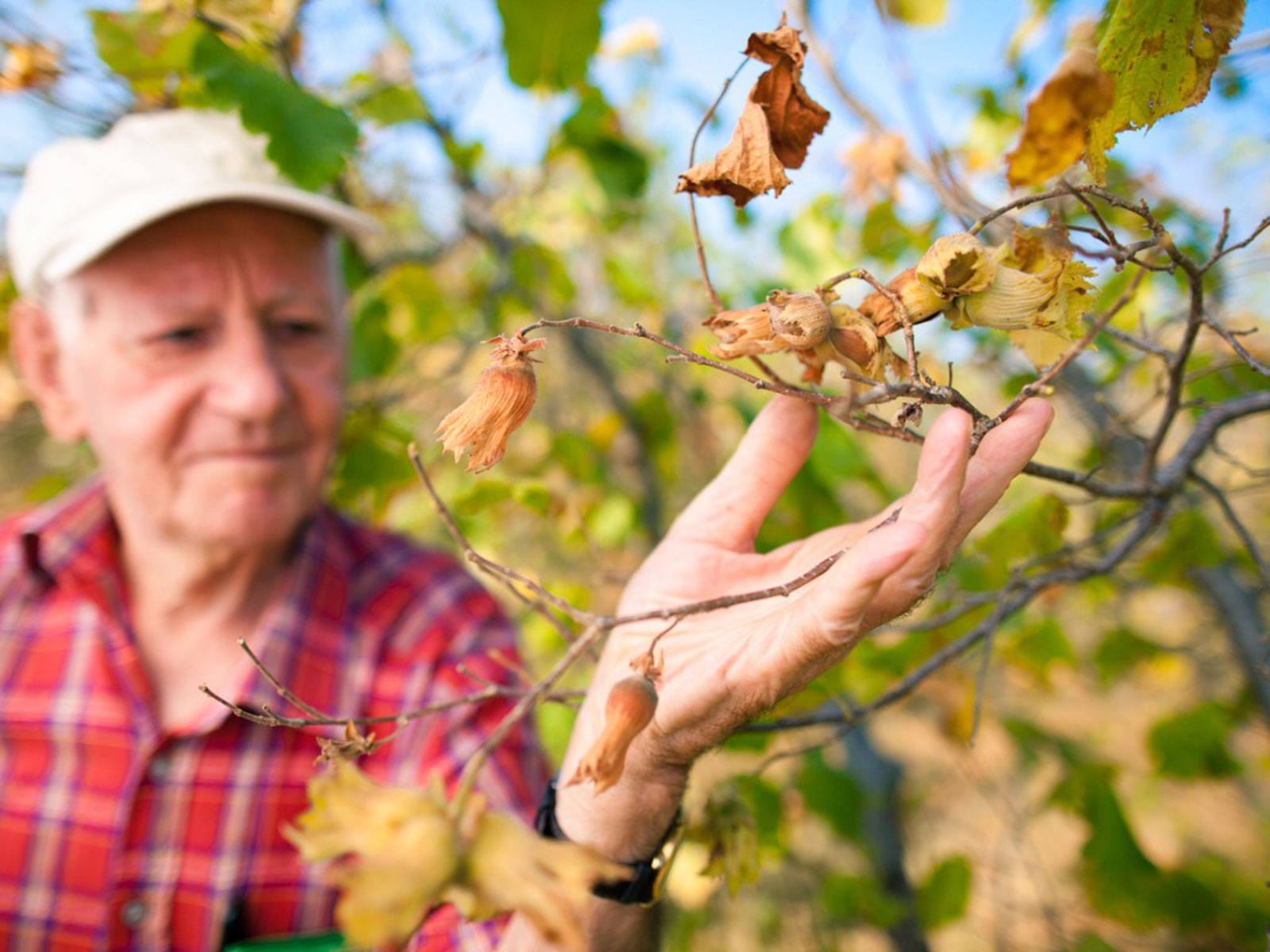If you’ve accidentally left a plant unwatered for too long and it has gone dry and crispy, you might be wondering if you can save it.
Sometimes, the problem of drying out can come from too much sun or from over-watering (yes, that can make your plant dry out because rotten roots can’t soak up water).
Finding the cause will be the most important part, but if you do find it, could you revive a plant that dried out?
Fortunately, you can revive a plant that dried out as long as the roots themselves aren’t completely dry, by following these 9 simple steps:
- Find The Cause
- Assess The Damage
- Soak If Appropriate
- Trim Away Dead Matter
- Re-pot In Fresh Compost
- Move To A Shady Spot
- Water Lightly
- Nurture
- Feed
Although the steps seem simple, it is critical you get them exactly right if you want your plant to survive.

Can A Dried Out Plant Be Saved?
Sometimes dried out plants can be saved – but not always.
It will depend on how quickly you have noticed there is a problem, what the problem came from, and how effectively you can nurse the plant back to health.
If your plant has healthy roots, you may be able to save it, but some plants will just have to be replaced.
The roots are key here, if the roots of the plant are completely dried out then, unfortunately, you won’t be able to save the plant.
One cause for such damage is leaving plants on the radiator in winter. Radiators will cook the roots of your plant if you aren’t careful.
9 Steps To Save A Dried Out Plant
There are a few simple things you can do that will help you save a plant that has dried out.
Let’s explore what steps to follow.

Step 1: Find The Cause
You can’t save a plant if you don’t know what’s wrong – and you may make it worse.
Think about what has happened to your plant recently.
Have you forgotten to water it? If so, that’s probably obvious; the soil will be dry and powdery, and the plant may have lost a lot of its leaves.
Think about other problems too, though.
For example, if the weather has suddenly turned hot, your plant may have dried out because it’s getting too much sun and its roots are cooking.
Alternatively, if you are over-watering your plant, its roots may be rotting and it may be dying of thirst because it can’t soak up moisture anymore.
Determining the cause is absolutely key to working out how to revive the plant; without a known cause, you haven’t got a hope of saving it.
Step 2: Assess The Damage
How bad is it? Has your plant lost all its leaves? Has it shriveled up completely?
There is sometimes nothing you can do, but you can always try, even if a plant looks completely gone.
Some plants will survive even if they lost all their leaves, others can even recover from just a scrap of healthy root.
Understanding the damage is extremely important and, worse case scenario, if the plant has no leaves left and it’s dried out completely, take a quick look at the roots.
Here I have a complete guide with pictures on keeping plants small, have a look and see how the roots of a healthy plant look like.
If the roots are dried out and they appear to break easily, it might be too late.
Check out how badly off your plant is, and decide whether it’s worth attempting to save it. Usually, there’s no harm in trying!
Step 3: Soak If Appropriate
If your plant has dried out because you forgot to water it or it has got too much Sun, the first thing to do is place the whole pot in some water and thoroughly soak it.
Let it fill up with water and allow the soil to become completely saturated.
One good trick is to soak them in the sink or the bathtub. It’s easier, less messy and can fit bigger plants.
This will help to cool the roots down and ensure the plant has immediate access to as much water as it wants. You can do this for ten minutes or so, and then place the plant somewhere cool to see if it recovers.
I’ve used this method multiple times on plants that have got neglected on sunny days, and it will usually revive them if you do it quickly.
Don’t leave the plants in water for too long, though; they need to breathe, and they do that through their roots.
Step 4: Trim Away Dead Matter
For plants that have a lot of dried up and dead stems, leaves, etc., you may want to do some trimming.
This will encourage the plant to focus on new, healthy growth, rather than old, injured growth.
Use sharp scissors to cut away any plant matter that is no longer of use to the plant, and discard it in your compost.
I always compost dead leaves.
You would be better not disturbing the roots if it can be avoided, but if your plant is entirely dead above the surface, you might have to.
If you find that the roots are very brittle or very mushy, but there is some good root left, cut off all the bad stuff.
Make space for new roots to grow, handling what is left of the roots with great care.
Step 5: Re-pot In Fresh Compost
If you’ve had to dig your plant up, you’ll want to re-pot it.
You should use fresh compost to give your plant the best chance of recovery at this point.
Note that you don’t have to do this if your plant has just got a little dried out – a soak may be all that it needs to recover.
When the roots you expose are wet and rotten, you should give them a bit of a chance to dry out before you put them in new soil. Put them on a piece of kitchen towel (to help absorb moisture) and leave them somewhere shady for a few hours.
Do not put them in the sun – roots never want to be exposed to direct sunlight. The air should be enough to dry them.
Once they are dry (or if you aren’t dealing with rotten roots), you can re-pot them.
Handle the roots gently and settle them a little below the surface of the fresh soil.
We have occasionally had success with re-potting roots after a plant has died, but don’t be too disappointed if this doesn’t work; it often won’t.
Step 6: Move To A Shady Spot
Once you’ve watered (or re-potted, depending on the circumstances) your plant, you need to put it somewhere shady.
Even light-loving plants will recover better from the shock of drying out if they are not exposed to direct sunlight for a while.
We always put plants that have been re-potted in shady areas for a few hours. This gives their roots time to settle into the soil and avoids stressing them on top of the shock of being transplanted.
You can move them back to a sunny spot once they’ve settled a bit.
If you have soaked your plant thoroughly, putting it somewhere shady will ensure the soil stays damp for longer, giving the roots a good chance to soak up plenty of moisture and offer it to the plant.
Step 7: Water Lightly
For plants that have just been re-potted, water their fresh compost a bit.
You shouldn’t totally flood it, as this will disturb already fragile roots.
Just lightly water the surface and make sure there is moisture available to the plant.
Treat your plant like a seedling and give it just a bit of water at a time, being careful not to flood it and disturb it.
Although deep waterings are better overall, in this case, little and often will make sure your plant has water, and isn’t being over-watered.
Step 8: Nurture
Watch your plant for a few days.
You will hopefully start to see new shoots starting. Depending on the species, these might start to appear very quickly, but some will take longer.
Shoots will often be pale green and very thin to begin with.
Keep treating your plant carefully. It will be shocked and its energy reserves will be low.
Water it little and often, and protect it from bright sunlight – new leaves are vulnerable to burning.
We sometimes put a piece of paper between plants and the sun; this is enough to give them light, but can protect them from burning.
With care, you should see your plant coming back over time, if it has enough strength to recover from drying out.
Step 9: Feed
Some people recommend feeding your plant if it has got dried out.
This can boost its nutrients and help it re-grow its leaves and stems more quickly.
However, we don’t tend to do this – although we might add extra compost to the pot. Water will wash the nutrients from this into the soil below.
Plants that have been fertilized tend to need more water, so if the plant has been too dry, this doesn’t seem like a good combination.
On the whole, plants will focus on using energy already stored in their roots, rather than pulling more in from the soil.
However, the strategy certainly works for some people and there is no harm in trying – just don’t over-fertilize your plant.
That is likely to harm it and could set its growth back significantly.
Follow the directions on the packet, or do slightly less than recommended.
You should increase your watering schedule slightly when you have just fertilized a plant, but always check the soil is drying out a bit between waterings to avoid the roots getting rotten.
Push the tip of your finger an inch into the soil; if it’s dry, the plant is ready for more water.
And that’s how you do it!

Final Thoughts
You can’t always save plants that have dried out, but with careful treatment, you may be able to.
Try and water regularly and check on your plants every couple of days to avoid them getting so dry they can’t be revived.
If you find one desperate for a drink, give it a good, long soak to fully saturate the soil, and remove dead growth that will drain the plant’s energy.

